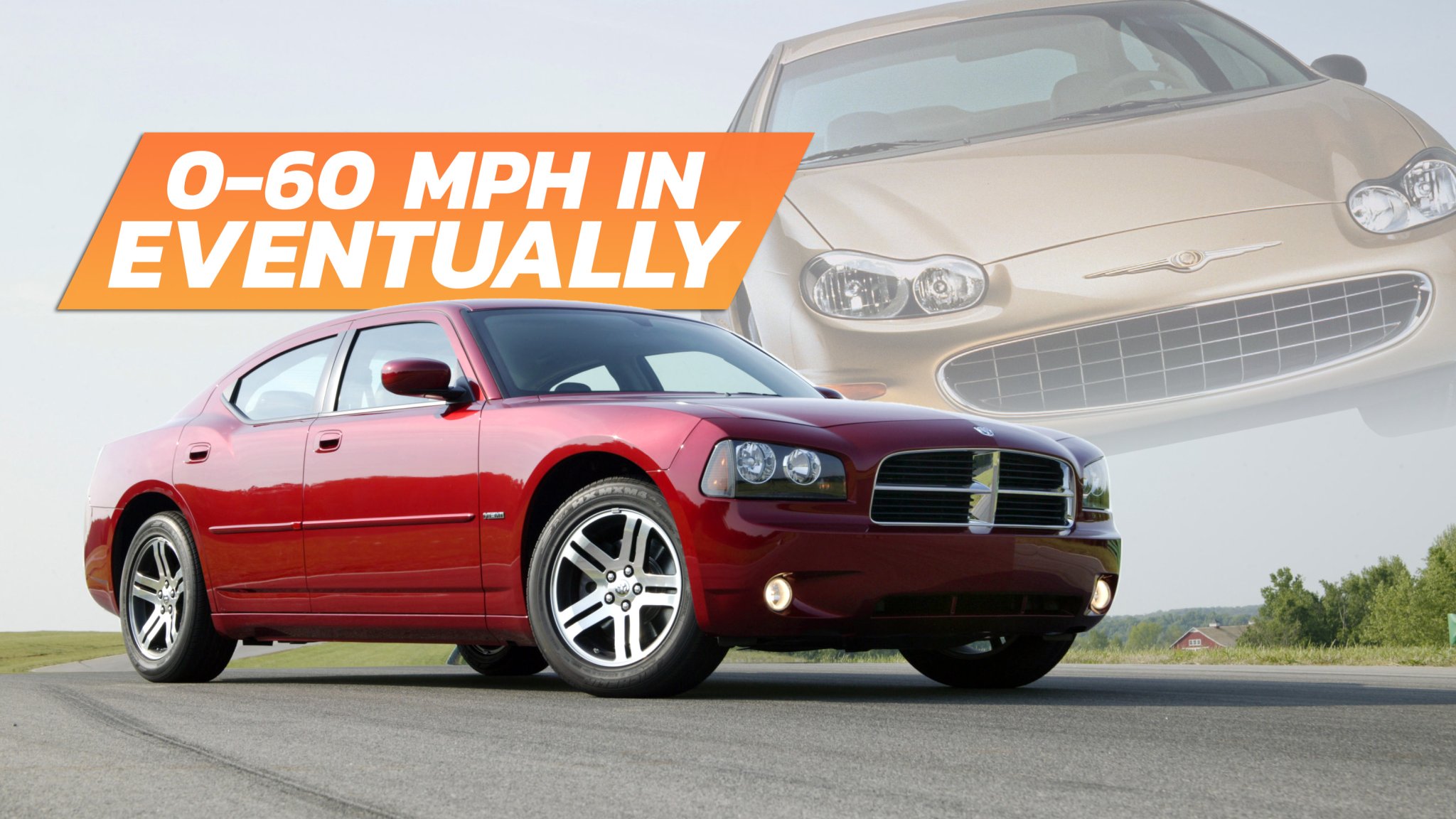

From Daytona to the drag strip, the Dodge Charger stakes a strong claim as the greatest muscle car of all time. But this iconic Dodge didn’t always leave the factory with chest-beating, tire-shredding torque. Some Chargers were built with engines so pathetic that traction control was an option. I’m not talking about the 3.6-liter V6, or even the earlier 3.5. I’m talking about the 2.7-liter, which some regard as one of Chrysler’s worst engines of the modern era.
Since its reintroduction as a sedan for the 2006 model year, the vast majority of Chargers have been shipped with one of a multitude of Hemi V8s or, as the backup option, a V6. In the now honorably discharged LD model, that was the 3.6-liter Pentastar: a solid if unremarkable motor for a car like the Charger. Before that, there was the 3.5-liter “Magnum” V6, a humble single-cam, non-interference sewing machine that had previously disappointed in the Plymouth Prowler (not to mention the famous Prangler). But there was still a smaller V6 whose memory has almost been lost to time, as it arguably should be.


The 2.7-liter, twin-cam “EER” V6 was the LX Charger’s base engine upon launch, having been introduced to the platform for the Magnum wagon the year prior. This engine was designed for Chrysler’s LH-platform front-wheel-drive sedans, starting with the 1998 Chrysler Concorde and Dodge Intrepid. Supposedly, the 2.7 wasn’t available to the general public at first, being restricted to fleet customers for the introductory 2006 model year.
But in 2007, Dodge unleashed the 2.7’s gamer rage upon the American public for the first time. All 190 horsepower and 190 lb-ft of it, which withered further on their way through the four-speed automatic to the rear axle. In the SE base model (to which the engine was exclusive), steel wheels were standard, while traction control was optional, according to a sales pamphlet on eBay. Not that you’d need it, as the 2.7 was only good for zero to 60 mph in about 10 seconds, making it slower than even the heavier Ford Crown Victoria. At full tilt, it seems to top out at just 112 mph in the video below. Just imagine how much worse it would’ve been with all-wheel drive. Actually, keep imagining how it could get worse, because it does.

For 2009, Dodge downrated the 2.7 to just 178 hp, with torque remaining the same. Somehow, gas mileage suffered too, falling from 21 miles per gallon city and 28 highway to 18 city and 26 highway. By this point, the 2.7 had also developed a reputation for oil sludge buildup, not to mention timing chain tensioner failures. Some Mopar-or-no-car guys insist these problems had been fixed since 2001, well in advance of the engine’s arrival in the Charger. But it was an aging motor, and its time was dwindling anyway. When the redesigned 2011 model broke cover, the 3.6 we know today was ready, and it replaced both smaller V6s.
Despite how much time I’ve just spent dunking on the 2.7-liter Charger, I kinda want one now. When I found out about these, the first people I told were my fellow 24 Hours of Lemons racers. Just think about it: The Charger has good suspension geometry and great aftermarket support. If anything, a disreputable engine is a boon, because the judges will write it off as a sludge factory and drop you in the slowest class. Too bad I’ve already got a race car, and a trillion more worse ideas ahead of it in line. One of you do me proud and make it happen—I’ll shoey a shot of Malört in your honor.
Got a tip or question for the author? You can reach them here: james@thedrive.com